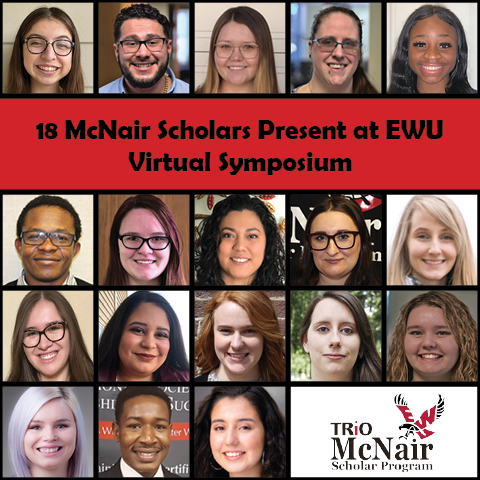Hope Sands
Hope Sands graduated in 2021 with a major in Anthropology with a focus in Archaeology and Artifact Conservation, as well as a major in Philosophy. As an Honors student and a member of Phi Eta Sigma and Phi Kappa Phi, honor societies at EWU, Hope was selected to present at the Western Regional Honors Conference on “Exploring the Physical Realm of History Through the Holocaust.” In the Summer of 2019, Hope traveled abroad for a two-and-a-half week program, the Summer Institute on Diversity, Inclusion and the Holocaust, hosted by Hanze Honors College in the Netherlands. Hope said the institute taught her how to critically think in tough situations and how to act not as a bystander but as an active participant in the fight for social justice.
For her EWU McNair Summer Research Internship, Hope studied Fort Spokane under the mentorship of Dr. Brian Buchanan. Hope was accepted with full funding to the Masters program in Anthropology at Wichita State University. In 2021 Hope began working in her field as a Cultural Resource Management Field Technician for Historical Research Associates and plans to apply to PhD programs after getting this critical field experience.
2020 McNair Faculty Research Mentor: Dr. Brian Buchanan
Research Title: Understanding the Historical Past of Fort Spokane through Landscape Archaeology
Abstract: This project will look at the historical past of Fort Spokane in an attempt to understand the archaeological and geographical significance of the Forts construction. Previous archaeological projects at this location have focused more so on the Fort itself, rather than the Fort and its surrounding environs. This project hopes to close that gap by looking at a wider scope. The project will use a combination of Landscape Archaeology as our methodology of choice as well as GIS (Geographic Information System) analysis using digital models and viewsheds. The viewsheds will help us determine the geographical advantages, if any the Fort has to its surrounding areas. It was built near two Native American reservations and possesses a long history with these tribes spanning over 50 years (Riser and DePuydt 2012). The results of these viewsheds brought up some interesting findings, including that the Fort is in fact not able to see as much of the surrounding landscape as we originally thought. We have concluded that Fort was built not for its geographic location, but more so for its convenience along the river and being near two Native American reservations. In future projects, we hope to look at the artifactual remains of the Fort as well as explore other avenues of possibilities to build a bigger picture of the Fort and its historical past.








